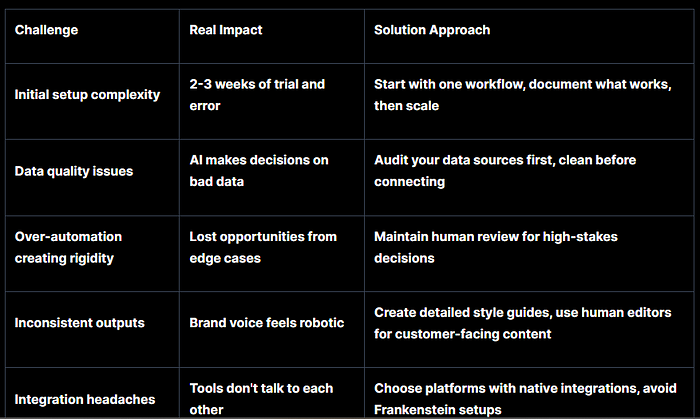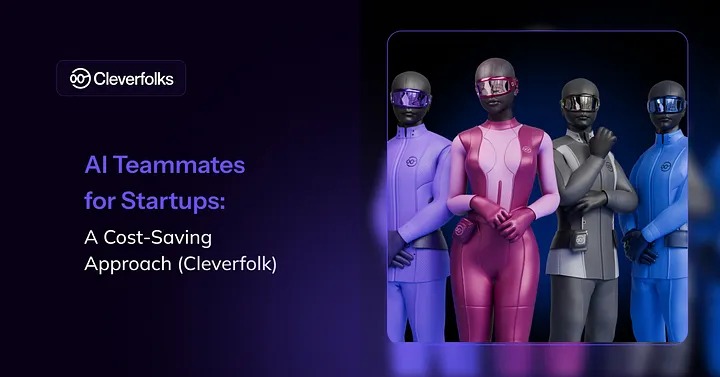The traditional hiring playbook, find talent, negotiate offers, onboard humans, has quietly expanded. Founders are now asking two questions simultaneously: “Who do we hire next?” and “What role can an AI employee take on right now?”
This evolution has emerged across founder Slack channels, Notion wikis, pitch decks, and accelerator demos. Startups have moved beyond defaulting to agencies or interns for every operational task. They’re assigning them to autonomous agents. Not because it’s trendy, but because the ROI on a well-deployed AI employee has become impossible to ignore.
In fact, in 2024 alone, over 65% of early-stage startups reported integrating AI tools directly into core workflows (Retool State of AI Report). And investors are following: more than $8 billion has flowed into companies building agentic AI systems, from Adept to Cognosys, tools meant to do, not just assist.
The model is proving out across the board. From small, under-10-person teams using agents for customer onboarding and finance ops, to Y Combinator-backed startups scaling without traditional hires, results are speaking for themselves. Even Slack, Notion, and ClickUp have responded, racing to support embedded agent flows.
An AI employee has moved beyond just helping. It’s becoming the first hire.
From Hustle Culture to Precision Culture
This shift toward AI employees represents more than just a hiring trend, it’s fundamentally changing startup culture itself.
Traditional startup wisdom has always centered around “doing more with less.” The reality is that less has often meant burnout, task overload, and inconsistent execution. The new wave of startups has flipped that approach entirely. They’re doing less with AI, but doing it way better.
Take lead qualification. Instead of hiring a $3,500/month SDR who burns out after three months, startups are deploying AI agents that process leads 24/7, score them based on 15+ data points, and hand off only qualified prospects to human closers. The difference: human SDRs convert 2–3% of cold leads. AI-qualified leads convert at 12–15%.
Or consider financial reporting. Sarah Chen, founder of logistics startup FleetFlow, spent 8 hours every month creating investor updates. Now her AI CFO pulls data from Stripe, QuickBooks, and her CRM, generates P&L summaries, identifies concerning trends, and drafts the narrative, all while she sleeps. “I get my draft investor update at 6 AM every month,” she says. “It’s 90% accurate and saves me an entire weekend.”
These examples represent a broader pattern: startups achieving higher quality outputs while reducing both costs and founder cognitive load.
Why Most AI Tools Miss the Mark
Understanding this transformation requires recognizing a crucial distinction that many founders miss when evaluating AI solutions.
Most AI tools work like advanced calculators. You input a request, get an output, then move on. ChatGPT can write your job posting, but it won’t monitor applications, screen candidates, or schedule interviews. Notion AI can draft your project plan, but it won’t track progress, send reminders, or escalate delays.
Real business operations require continuous workflows, not one-off outputs.
Agentic AI behaves like an actual teammate. It observes your workspace (Notion, emails, CRM), makes decisions based on context, follows up when needed, and operates independently across entire workflows. The difference between asking AI to write an SOP and having AI that runs the SOP.
Here’s what this looks like practically:
- Traditional AI: “Generate 10 customer interview questions”
- Agentic AI: Monitors your customer feedback channels, identifies patterns in complaints, schedules follow-up interviews with affected customers, conducts the interviews via email surveys, analyzes responses, and updates your product roadmap with prioritized fixes.
The technical difference matters for ROI. Traditional AI saves you 30 minutes of writing. Agentic AI saves you 8 hours of coordination, follow-up, and analysis, every week.
The Real Challenges (And How Teams Solve Them)
AI Employees have significant limitations. After working with 200+ early-stage teams, here’s what actually breaks and how successful founders handle it:

The critical insight: successful AI Employee implementations require 60% setup, 40% ongoing management. Teams that treat AI like “set it and forget it” fail. Teams that treat AI like training a junior employee succeed.
Cost Reality Check:
- Human hire: $50K salary + $15K benefits + 3 months training = $68K first year
- AI Employee: $2K setup + $500/month tools + 40 hours management = $8K first year
- Break-even: Month 2
But the real advantage shows up in year two. Human employees need raises, take vacation, and may quit. AI employees get better and cheaper.
The Founders Who See What’s Coming
While most startups still operate through reactive hiring and chaotic workflows, a small group of founders has recognized something profound: the companies being built today will fundamentally operate differently than those built five years ago.
These founders understand that traditional startup advice, hire fast, move fast, break things, was designed for a world where human labor was the only option for execution. They’re building systematic thinking into their DNA from day one.
Marcus Rodriguez, founder of B2B SaaS company DataPipe, put it this way: “My competitors are hiring their way out of operational problems. I’m systematizing my way out. While they’re managing 12 people, I’m managing 4 humans and 5 AI employees. My burn rate is 40% lower, but my execution speed is faster because I don’t have coordination overhead.”
The pattern among early adopters:
- They architect workflows before adding headcount
- They measure system efficiency, not just individual productivity
- They scale quality alongside quantity
- They view AI as infrastructure, not tooling
These founders have realized that AI makes entirely new approaches possible. The result: startups achieving breakthrough outcomes with resources that would have been impossible to coordinate manually.
But here’s the uncomfortable truth: This advantage has an expiration date. The founders implementing AI employees today are building 12–18 months of competitive moat. Once this approach becomes common knowledge, the advantage disappears.
The question becomes: will you be among the early adopters who define the next decade of entrepreneurship, or will you be playing catch-up?
Join the Next 100 Founders Building with AI Employees
We’re opening early access to Cleverfolks, a fully integrated workspace where AI Employees handle your core operations while you focus on strategy and growth.
What you get as an early adopter:
- Custom setup session: where we configure AI employees specifically for your business data and workflows
- Private founder community: of 100 startups sharing what works, what doesn’t, and optimizing together
- 50% off for the first 6 months: plus, priority access to new AI Employee roles as we build them
- Direct line to our team: for troubleshooting, optimization, and feature requests
The commitment: 90 days to see measurable impact on your operations, or we’ll refund your setup and help you transition back to your old workflows.
Join the Waitlist Limited spots available for early access. No credit card required.
Current waitlist: 847 founders. We’re accepting the next 100.
